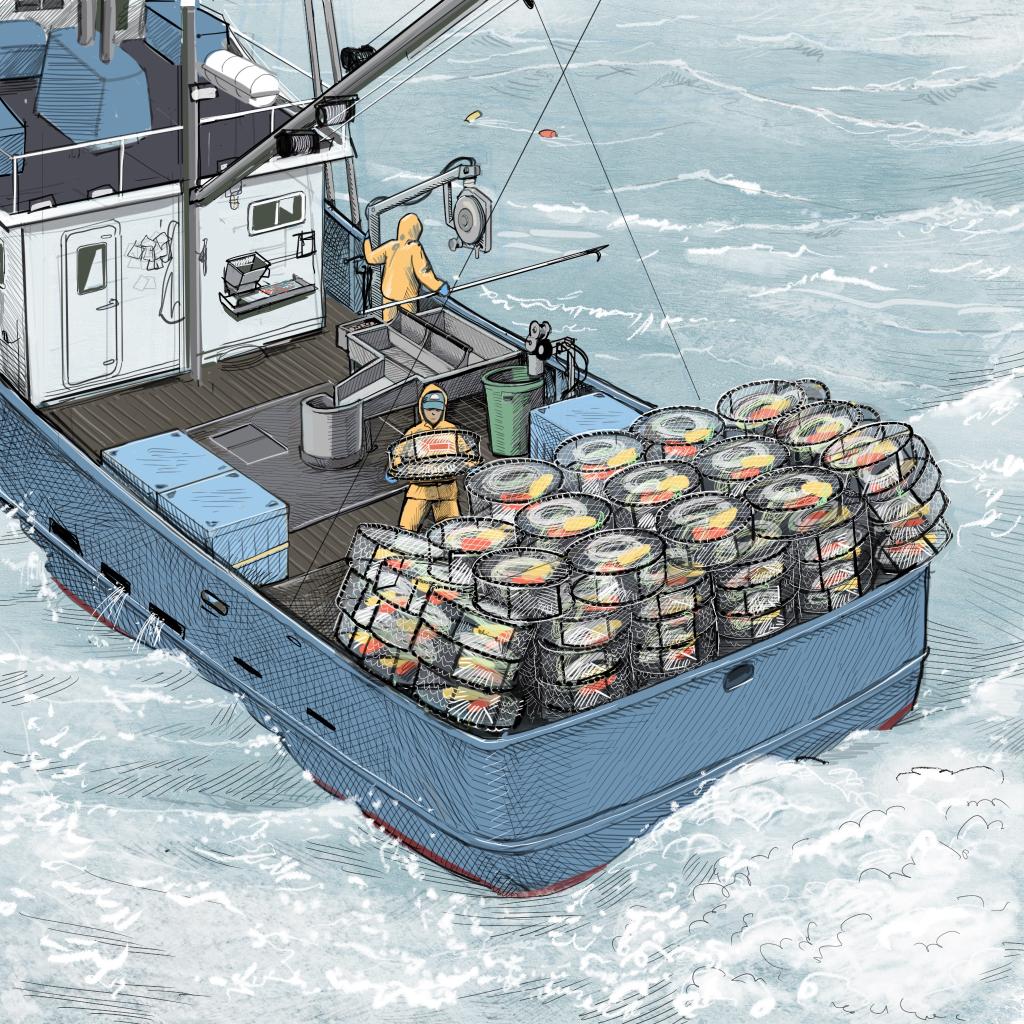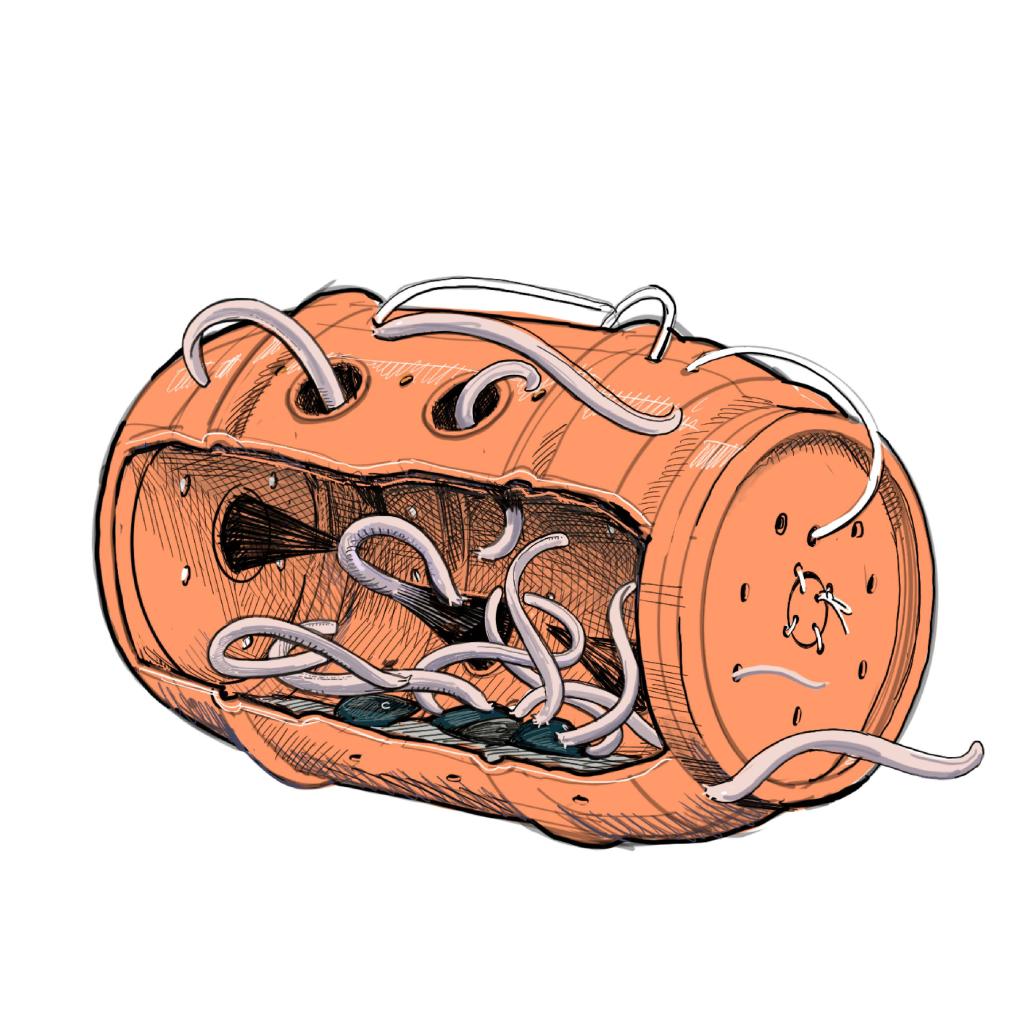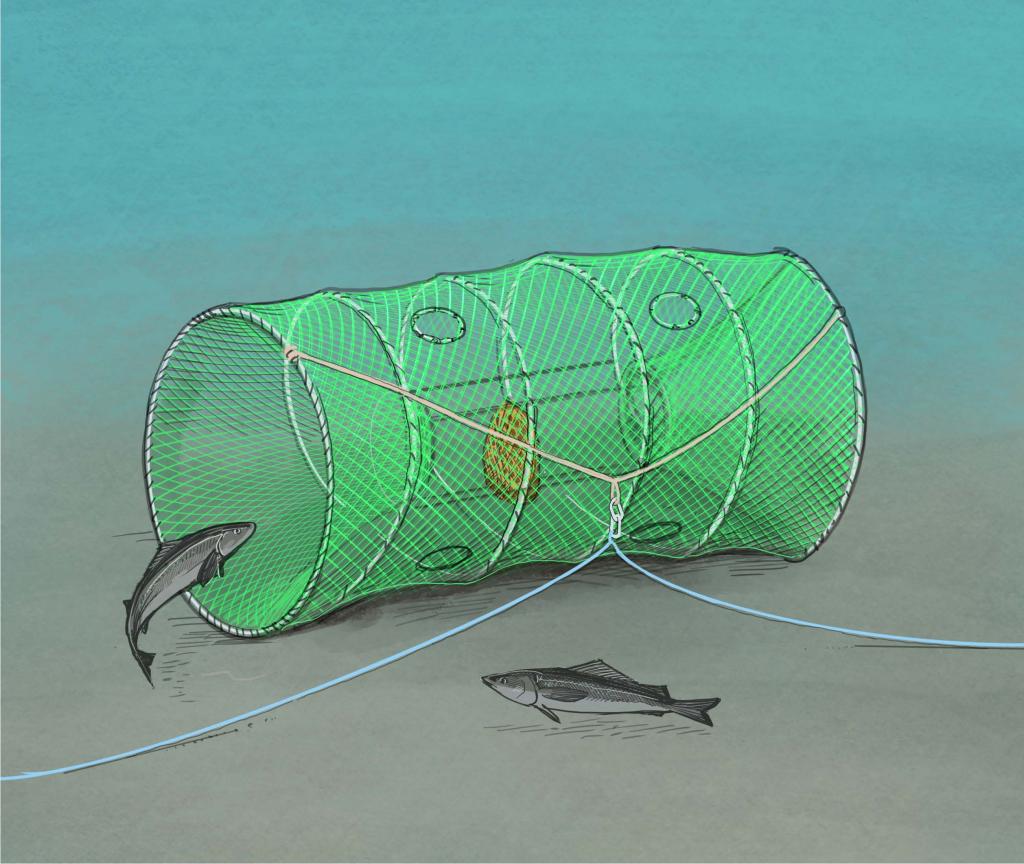
Commercial pots are a type of round or conical trap. They are primarily used to catch Dungeness crab, sablefish and hagfish.
Dungeness crab pots measure three to four feet across and weigh more than 100 pounds. They are made of a rubber-wrapped steel frame surrounded with wire mesh. A small basket of bait draws crabs to the pot, and they crawl in through two tunnels. Crab pots have sustainability features including escape rings that allow undersized crab and non-target species to get out of the pot. The pot also has a section of biodegradable mesh that degrades over time so that if the pot is lost at sea, the pot will fall apart and animals caught inside can escape. The pots have markings that help fisheries managers ensure a sustainable fishery, including a numbered tag on the buoy and vessel identification on both the pot and buoys. Fisheries managers also coordinate programs that recover lost gear.
Dungeness crab pots are set as “singles” or in rows of multiple pots called strings. Despite the name, the rows of pots are not connected by lines between the pots. Each pot has a line that connects to a surface buoy, with one or more additional buoys trailing at the surface to make the pot easier to retrieve. The pots are left to soak for a certain amount of time, typically one to four days. They are retrieved with the help of a hydraulic puller called a crab block. Once onboard, the contents of the pot are removed and crabs are sorted, with females and crabs measuring less than the legal size returned to sea. Crabs that are legal size and marketable quality are stored in refrigerated seawater in the hold or in tanks filled with fresh seawater on deck. If pots are successful in catching crab, fishermen will replace the bait and set the gear in the same location; otherwise, they may move the gear to another area.

Hagfish are commercially fished using pots that are typically plastic and range from five-gallon buckets to 55-gallon barrels (like those used for olives or pickles) and cylindrical Korean pots. Hagfish pots include features similar to other pots, including holes or mesh that enables water to flow through the pot, one or more funnels where hagfish enter, and at least one escape port. Hagfish pots are deployed and serviced similarly to other pots. 
Sablefish are caught using round basket pots and cylindrical slinky pots, named for their collapsible frames. Round basket pots are similar to traditional sablefish traps, with large, heavy wire frames that require heavy equipment to haul. Slinky pots are a newer fishing method. They are smaller and lighter than basket pots and collapse down to a smaller size for easier storage on deck.

Whatever the shape, an escape port is required to allow undersized sablefish and non-target species to get out of the pot. As with crab pots, sablefish pots have a section of biodegradable mesh that degrades over time so that if the pot is lost at sea, it will fall apart and animals caught inside can escape.
Sablefish pots are usually deployed with multiple pots attached to a line on the ocean floor between buoys that mark the ends of the line. Rarely, they are set singly, like crab pots.
Note: Sablefish are also fished using rectangular and trapezoidal traps; visit our Traps page to learn more.